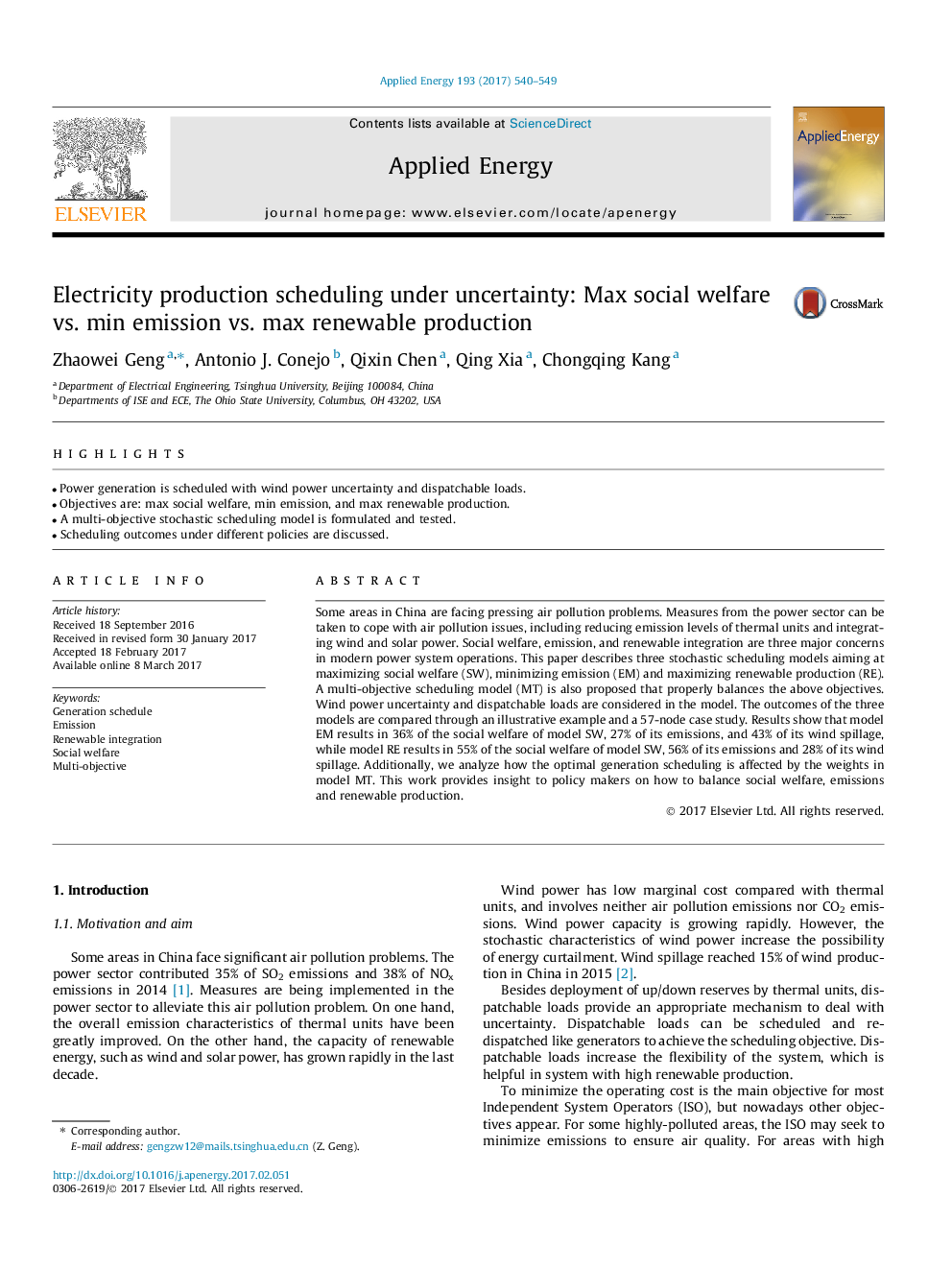| Article ID | Journal | Published Year | Pages | File Type |
|---|---|---|---|---|
| 4916323 | Applied Energy | 2017 | 10 Pages |
Abstract
Some areas in China are facing pressing air pollution problems. Measures from the power sector can be taken to cope with air pollution issues, including reducing emission levels of thermal units and integrating wind and solar power. Social welfare, emission, and renewable integration are three major concerns in modern power system operations. This paper describes three stochastic scheduling models aiming at maximizing social welfare (SW), minimizing emission (EM) and maximizing renewable production (RE). A multi-objective scheduling model (MT) is also proposed that properly balances the above objectives. Wind power uncertainty and dispatchable loads are considered in the model. The outcomes of the three models are compared through an illustrative example and a 57-node case study. Results show that model EM results in 36% of the social welfare of model SW, 27% of its emissions, and 43% of its wind spillage, while model RE results in 55% of the social welfare of model SW, 56% of its emissions and 28% of its wind spillage. Additionally, we analyze how the optimal generation scheduling is affected by the weights in model MT. This work provides insight to policy makers on how to balance social welfare, emissions and renewable production.
Related Topics
Physical Sciences and Engineering
Energy
Energy Engineering and Power Technology
Authors
Zhaowei Geng, Antonio J. Conejo, Qixin Chen, Qing Xia, Chongqing Kang,
